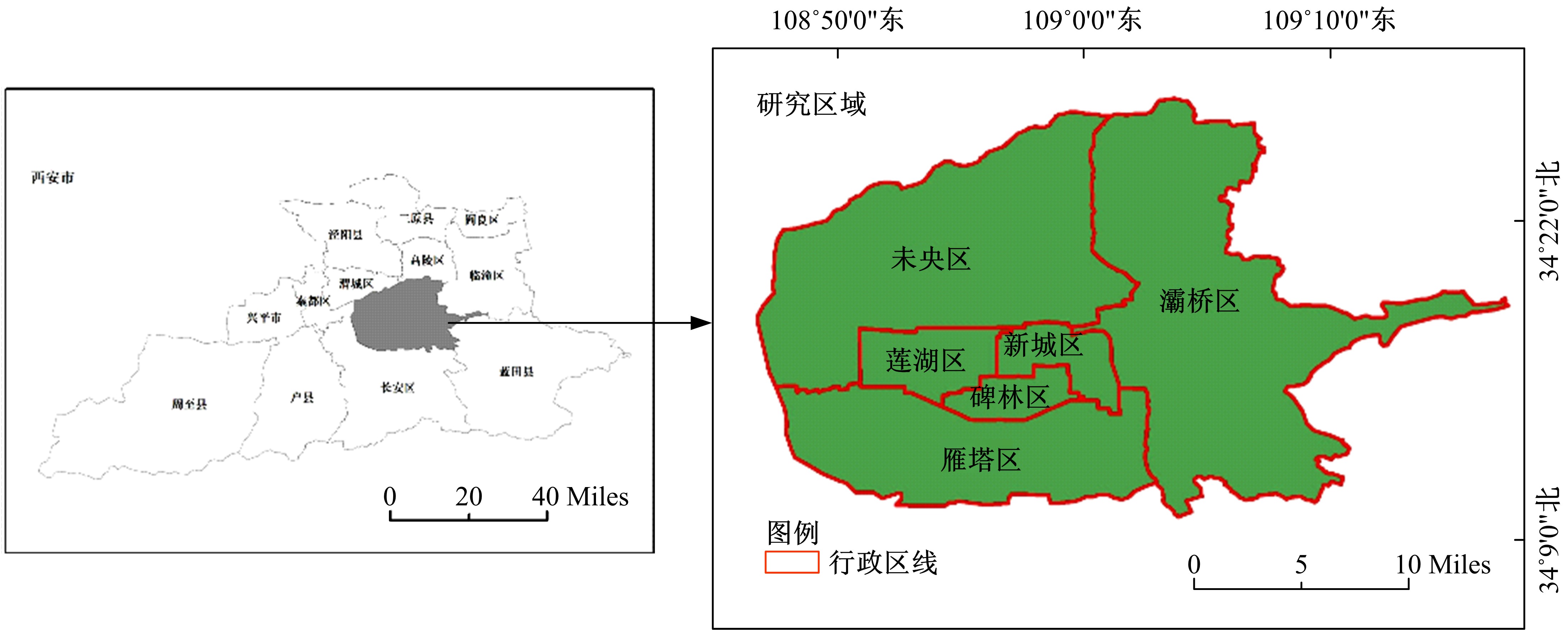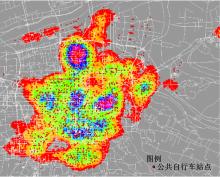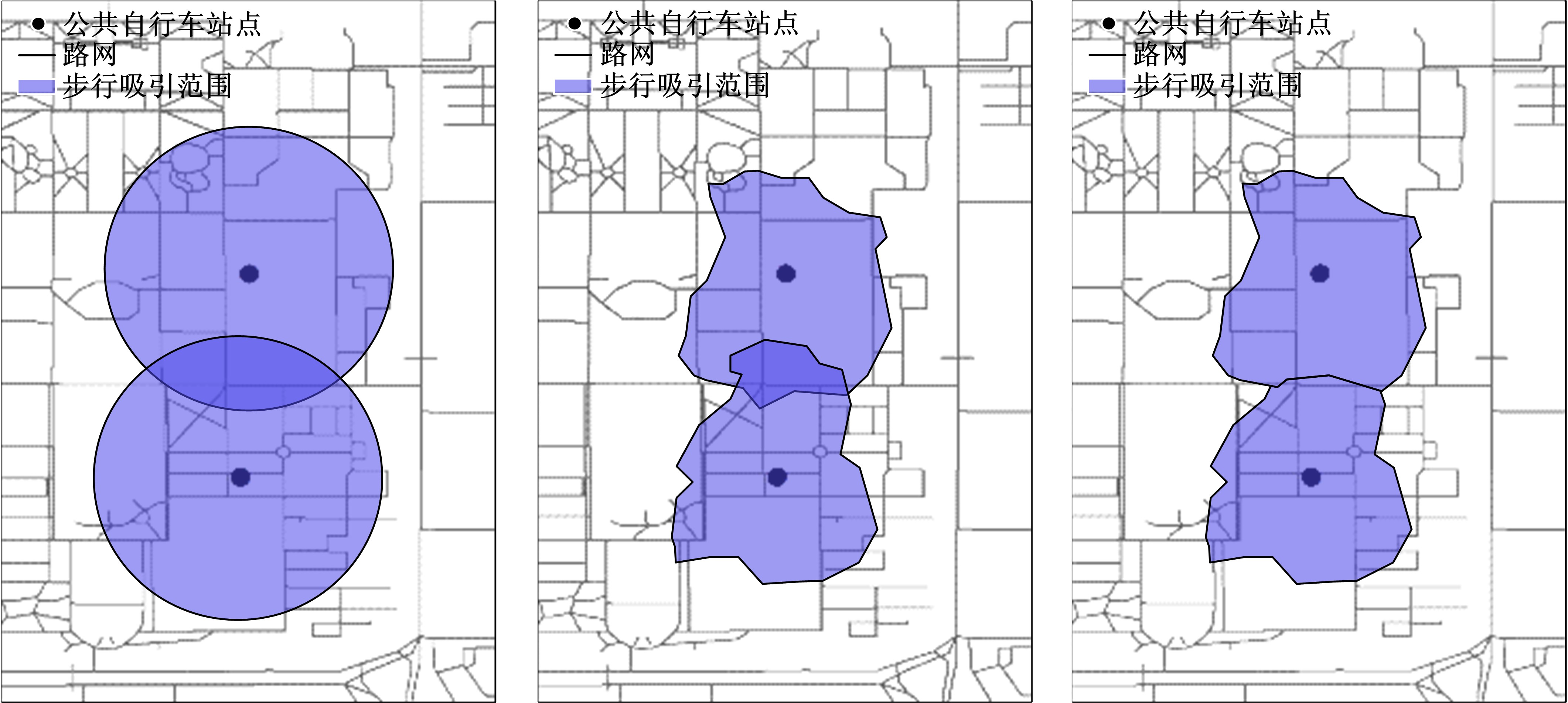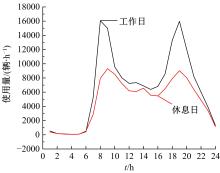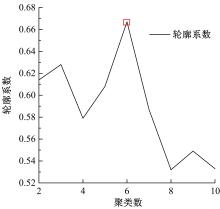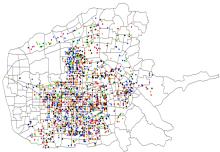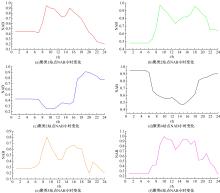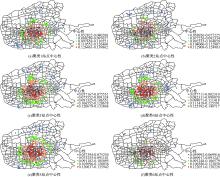吉林大学学报(工学版) ›› 2021, Vol. 51 ›› Issue (2): 531-540.doi: 10.13229/j.cnki.jdxbgxb20191153
• 交通运输工程·土木工程 • 上一篇
站点分类下的城市公共自行车交通需求预测
- 长安大学 运输工程学院,西安 710064
Forecast of urban public bicycle traffic demand by station classification
Cai-hua ZHU( ),Xiao-li SUN,Yan LI(
),Xiao-li SUN,Yan LI( )
)
- College of Transportation Engineering,Chang′an University,Xi′an 710064,China
摘要:
准确掌握土地利用与公共自行车交通需求关系是调整管控措施和站点运营管理的关键依据,以西安市的公共自行车站点为例,先以多因子指标作为变量运用K-means聚类将站点分为白天目的地站点、夜间目的地站点、白天起源地站点和组合起源/目的地站点;然后针对各类站点属性,分别建立用地、公交线路、地铁出入口、站点中心性为解释变量的非线性回归模型,结果表明:站点区位、外部环境变量和土地利用对不同属性站点具有不同的客流生成率。结果可在城市公共自行车系统运营管理方面提供理论基础建议。
中图分类号:
- U491.1
| 1 | 周素红, 杨利军. 交通与土地利用一体化规划管理[J]. 规划师, 2005, 21(8): 14-19. |
| Zhou Su-hong, Yang Li-jun. Planning and management for integration of traffic and land utilization and case study[J]. Planners, 2005, 21(8): 14-19. | |
| 2 | 孔祥夫, 杨家文. 土地利用视角下的轨道站点客流预测——以深圳市为例[J]. 地理科学, 2018, 38(12): 2074-2083. |
| Kong Xiang-fu, Yang Jia-wen. A new method for forecasting station-level transit ridership from land-use perspective from land-use perspective: the case of Shenzhen city[J]. Scientia Geographica Sinica, 2018, 38(12): 2074-2083. | |
| 3 | 马新卫, 季彦婕, 金雨川, 等. 基于时空地理加权回归的共享单车需求影响因素分析[J]. 吉林大学学报: 工学版, 2020, 50(4): 1344-1354. |
| Ma Xin-wei, Ji Yan-jie, Jin Yu-chuan, et al. Geographically and temporally weighted regression for modeling spatio-temporal variation in dockless bikeshare usage demand[J]. Journal of Jilin University (Engineering and Technology Edition), 2020, 50(4): 1344-1354. | |
| 4 | 田恬, 谷达华, 牛德利, 等. 城市土地利用与城市交通协调关系评价——以重庆市主城区为例[J]. 西南大学学报: 自然科学版, 2019, 41(7): 96-104. |
| Tian Tian, Gu Da-hua, Niu De-li, et al. Evaluation of the coordination relationship between urban land use and urban transport: a case study of Chongqing's main district[J]. Journal of Southwest University (Natural Science Edition), 2019, 41(7): 96-104. | |
| 5 | Bullock C, Brereton F, Bailey S. The economic contribution of public bike-share to the sustainability and efficient functioning of cities[J]. Sustainable cities and society, 2017, 28(9): 76-87. |
| 6 | Wagner T. Regional traffic impacts of logistics-related land use[J]. Transport Policy, 2010, 17(4): 224-229. |
| 7 | 吴韬, 张梦莹. 基于GIS的轨道交通沿线土地发展演变研究[J]. 都市快轨交通, 2019, 32(3): 39-45. |
| Wu Tao, Zhang Meng-ying. Land development and evolution along rail transit based on GIS[J]. Urban Rapid Rail Transit, 2019, 32(3): 39-45. | |
| 8 | 唐炉亮, 陈西, 杨雪, 等. 基于城市用地的公共自行车骑行量建模[J]. 交通运输工程学报, 2018, 18(1): 150-158. |
| Tang Lu-liang, Chen Xi, Yang Xue, et al. Public bicycle usage modeling based on urban land use[J]. Journal of Traffic and Transportation Engineering, 2018, 18(1): 150-158. | |
| 9 | Wang F, Chen H, Zhu C, et al. Estimating driving fatigue at a plateau area with frequent and rapid altitude change[J]. Sensors, 2019, 19(22): 1-16. |
| 10 | Ermagun A, Lindsey G, Loh T H. Bicycle, pedestrian, and mixed-mode trail traffic: a performance assessment of demand models[J]. Landscape and Urban Planning, 2018, 177(4): 92-102. |
| 11 | 朱从坤, 韩晓玉, 何承韡. 基于城市轨道交通接驳的公共自行车租赁点规模确定方法[J]. 城市轨道交通研究, 2018, 21(9): 23-25, 31. |
| Zhu Cong-kun, Han Xiao-yu, He Cheng-wei. On the scale of public bicycle rental point based on rail transit connection mode[J]. Urban Mass Transit, 2018, 21(9): 23-25, 31. | |
| 12 | Li Y, Wang F, Ke H, et al. A driver's physiology sensor-based driving risk prediction method for lane-changing process using hidden Markov model[J]. Sensors, 2019, 19(12): 1-21. |
| 13 | Cardozo O D, García-Palomares J C, Gutiérrez J. Application of geographically weighted regression to the direct forecasting of transit ridership at station-level[J]. Applied Geography, 2012, 34(12): 548-558. |
| 14 | Chan S, Miranda-Moreno L. A station-level ridership model for the metro network in Montreal, Quebec[J]. Canadian Journal of Civil Engineering, 2013, 40(3): 254-262. |
| 15 | 朱亚迪, 陈峰, 王子甲, 等. 基于概率图模型的乘客出行链提取方法[J]. 吉林大学学报: 工学版, 2019, 49(1): 60-65. |
| Zhu Ya-di, Chen Feng, Wang Zi-jia, et al. Passengers′trip chains extraction method based on probabilistic graph model[J]. Journal of Jilin University (Engineering and Technology Edition), 2019, 49(1): 60-65. | |
| 16 | Vanderwaart C, Attanucci J P, Salvucci F P. Applications of inferred origins, destinations, and interchanges in bus service planning[J]. Transportation Research Record, 2017, 26(52): 70-77. |
| 17 | 吕铃, 彭雅丽, 曾欣怡, 等. 公共自行车复杂网络可达性指标潜力评价模型[J]. 计算机工程与科学, 2018, 40(1): 175-183. |
| Lv Ling, Peng Ya-li, Zeng Xin-yi, et al. An accessibility index potential evaluation model for the complex network of public bicycles[J]. Computer Engineering and Science, 2018, 40(1): 175-183. | |
| 18 | Seriani S, Fernandez R. Planning guidelines for metro-bus interchanges by means of a pedestrian microsimulation model[J]. Transportation Planning and Technology, 2015, 38(5): 569-583. |
| 19 | 蒋源, 陈小鸿, 徐晓敏, 等. 公共自行车接驳轨道交通服务范围研究[J]. 交通运输系统工程与信息, 2018, 18(): 94-102. |
| Jiang Yuan, Chen Xiao-hong, Xu Xiao-min, et al. Exploring The catchment area of public bike connecting to subway[J]. Journal of Transportation Systems Engineering and Information Technology, 2018, 18(Sup.1): 94-102. | |
| 20 | Chen Q, Sun T. A model for the layout of bike stations in public bike-sharing systems[J]. Journal of Advanced Transportation, 2015, 49(8): 884-900. |
| 21 | Zhang Y, Thomas T, Brussel M, et al. Exploring the impact of built environment factors on the use of public bikes at bike stations: case study in Zhongshan, China[J]. Journal of Transport Geography, 2017, 58(16): 59-70. |
| 22 | 贾洪飞, 郭明雪, 罗清玉, 等. GPS数据下的城市路网关键路段识别[J]. 吉林大学学报: 工学版, 2020, 50(4): 1338-1343. |
| Jia Hong-fei, Guo Ming-xue, Luo Qing-yu, et al. Identifying critical links of urban road networks based on GPS data[J]. Journal of Jilin University (Engineering and Technology Edition), 2020, 50(4): 1338-1343. | |
| 23 | Gutiérrez J, García-Palomares J C. Distance-measure impacts on the calculation of transport service areas using GIS[J]. Environment and Planning B: Planning and Design, 2008, 35(3): 480-503. |
| 24 | 邵滢宇, 丁柏群. 基于聚类分析的地铁站点分类——以哈尔滨地铁1号线为例[J]. 森林工程, 2015, 31(3): 106-111, 116. |
| Shao Ying-yu, Ding Bai-qun. Metro stations classification based on clustering analysis——a case study of Harbin metro line 1[J]. Forest Engineering, 2015, 31(3): 106-111, 116. |
| [1] | 罗清玉,田万利,贾洪飞. 考虑通勤需求的电动汽车充电站选址与定容模型[J]. 吉林大学学报(工学版), 2019, 49(5): 1471-1477. |
| [2] | 常山,宋瑞,何世伟,黎浩东,殷玮川. 共享单车故障车辆回收模型[J]. 吉林大学学报(工学版), 2018, 48(6): 1677-1684. |
| [3] | 曹骞, 李君, 刘宇, 曲大为. 基于马尔科夫链的长春市乘用车行驶工况构建[J]. 吉林大学学报(工学版), 2018, 48(5): 1366-1373. |
| [4] | 孙宝凤, 高坤, 申琇秀, 梁婷. 基于能力平衡和变覆盖半径的加油站网络扩充选址模型[J]. 吉林大学学报(工学版), 2018, 48(3): 704-711. |
| [5] | 孙璐, 徐建, 崔相民. 面板数据模型分析及交通事故预测[J]. 吉林大学学报(工学版), 2015, 45(6): 1771-1778. |
| [6] | 刘淑芬, 孟冬雪, 王晓燕. 的DBSCAN算法[J]. 吉林大学学报(工学版), 2014, 44(4): 1135-1139. |
| [7] | 龙雪琴, 关宏志, 秦焕美. 基于效率和安全的城市道路等级的自组织演化[J]. 吉林大学学报(工学版), 2013, 43(05): 1222-1229. |
| [8] | 韩成, 秦贵和, 宫宇, 张超, 薛耀红. 基于彩色结构光的三维重构方法[J]. 吉林大学学报(工学版), 2013, 43(05): 1343-1351. |
| [9] | 王建林, 杨印生, 王学玲. 基于可拓数据挖掘的黄河三角洲土地利用评价[J]. 吉林大学学报(工学版), 2012, 42(增刊1): 479-483. |
| [10] | 李琦, 姜桂艳, 杨聚芬. 基于因子分析与聚类分析的交通事件自动检测算法融合[J]. , 2012, 42(05): 1191-1197. |
| [11] | 徐森1,2,卢志茂2,顾国昌2. 结合K均值和非负矩阵分解集成文本聚类算法[J]. 吉林大学学报(工学版), 2011, 41(4): 1077-1082. |
| [12] | 徐亮,程国柱. 基于车速离散度和经济车速的高速公路最低车速限制[J]. 吉林大学学报(工学版), 2010, 40(03): 661-0665. |
| [13] | 刘炳恩,隽志才,贾洪飞 . 城市土地利用与交通系统关系的动力学模型[J]. 吉林大学学报(工学版), 2008, 38(增刊): 67-0070. |
| [14] | 李霞,邵春福,贾洪飞 . 土地利用与居民出行生成模型及其参数标定[J]. 吉林大学学报(工学版), 2007, 37(06): 1300-1303. |
| [15] | 王晓丽, 李银星. 土地利用模型的建立及其应用[J]. 吉林大学学报(工学版), 2004, (2): 316-319. |
|
||

